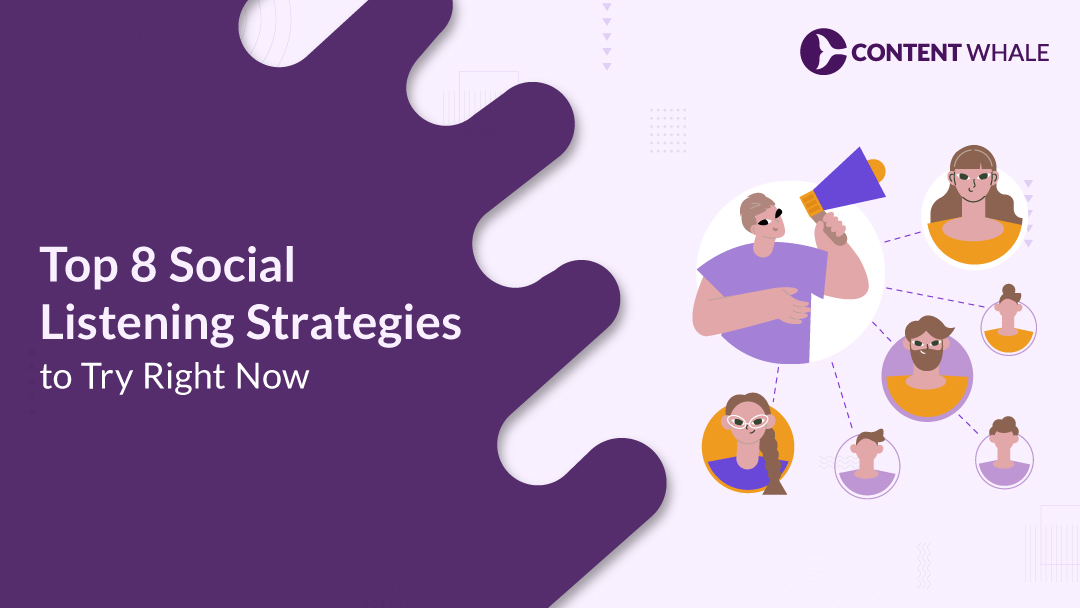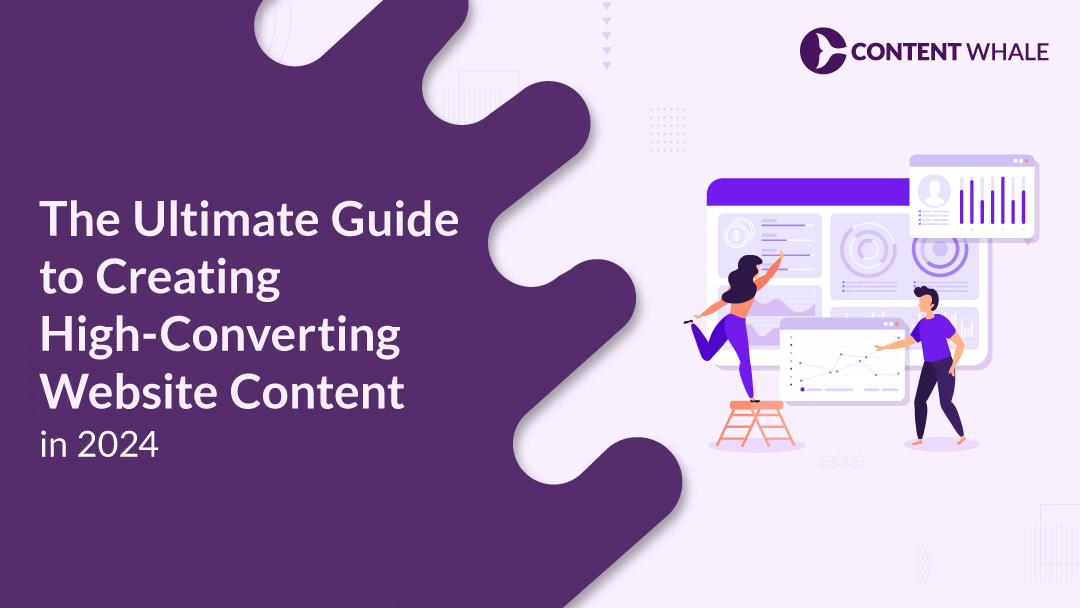Social media listening is a vital practice for businesses that want to stay connected with their audience and outpace competitors. By analyzing online conversations, brands can gather valuable insights into customer sentiments, trending topics, and industry movements.
This process extends beyond simply monitoring brand mentions—it’s about understanding what resonates with your audience and using that knowledge to improve your marketing strategies.
Mastering social media listening enables companies to refine their digital marketing efforts, protect their brand reputation, and engage more effectively with their audience.
Whether it’s uncovering new opportunities or addressing potential issues before they escalate, social media listening provides the actionable insights needed to make informed decisions.
This blog will explore eight strategies to help you optimize social media listening, enhance your online engagement, and gain a deeper understanding of your audience.
1. Set Clear Objectives
To effectively utilize social media listening, it’s essential to start with well-defined objectives. Knowing what you want to achieve guides your social media monitoring efforts and ensures they align with your overall digital marketing goals. Whether your focus is on enhancing online engagement, improving brand reputation, or gaining deeper audience insights, clear objectives are key.
Common Objectives:
- Monitoring Brand Mentions: Keep track of how often and in what context your brand is mentioned to manage and protect your brand reputation.
- Gathering Customer Feedback: Understand what customers are saying about your products or services to make informed improvements.
- Tracking Industry Trends: Stay updated with industry trends and competitor activities to refine your social media strategy and stay competitive.
Setting specific goals helps in measuring success and making data-driven decisions. When your social media listening efforts are goal-oriented, you can enhance your digital marketing strategy and drive better online engagement. This structured approach not only maximizes the effectiveness of social media listening but also ensures your efforts lead to meaningful insights and actionable outcomes.
2. Identify Relevant Platforms
Selecting the right platforms is crucial for effective social media listening. Each social media platform attracts a different audience, and understanding where your target audience is most active can significantly enhance your online engagement and overall social media strategy. By focusing your social media monitoring efforts on the platforms where your audience spends the most time, you can gather more relevant audience insights and improve your digital marketing efforts.
Key Considerations:
- Audience Demographics: Different platforms cater to different demographics. For example, LinkedIn is more suited for professional networking, while Instagram and TikTok attract younger audiences. Understanding these nuances helps tailor your social media listening strategy effectively.
- Platform-Specific Trends: Each platform has unique trends and conversations. Identifying where relevant discussions are happening allows you to tap into these conversations and engage your audience more effectively.
- Competitive Analysis: Monitoring your competitors on the platforms they are most active on provides valuable insights into their strategies and can inform your own social media strategy.
By identifying and focusing on the most relevant platforms, you can ensure that your social media listening efforts are targeted and effective. This approach not only enhances your ability to gather actionable audience insights but also strengthens your overall digital marketing strategy and online engagement.
3. Use Advanced Tools

Advanced tools are essential for enhancing your social media listening strategy. These tools allow you to track conversations, monitor brand mentions, and analyze audience insights across different platforms. By incorporating these tools into your digital marketing efforts, you can improve online engagement, gain valuable audience insights, and refine your social media strategy.
Here’s a comparison of some popular social listening tools:
| # | Tool Name | Key Features | Best For |
| 1 | Hootsuite | Real-time tracking, trend analysis, audience sentiment analysis, integration with multiple platforms. | Comprehensive social media monitoring |
| 2 | Sprout Social | Robust analytics, detailed reporting, brand mentions tracking, competitor analysis. | In-depth audience insights |
| 3 | Brandwatch | Advanced social data analysis, trend identification, customer feedback analysis. | Data-driven strategy development |
| 4 | Mention | Real-time monitoring, influencer tracking, sentiment analysis, user-friendly interface. | Small to medium-sized businesses |
| 5 | Talkwalker | AI-powered analytics, real-time monitoring, visual analytics (image/video analysis). | Comprehensive media insights |
By integrating these tools into your social media listening efforts, you can efficiently track and analyze conversations that matter to your brand. This approach ensures that your social media monitoring is not just about collecting data, but also about translating insights into actionable digital marketing strategies. Utilizing these tools will help you stay competitive, ensuring your brand remains responsive and engaged in the ever-changing digital environment.
4. Monitor Competitor Activity
Monitoring competitor activity is a crucial aspect of social media listening that provides valuable insights into industry trends and audience preferences. By keeping an eye on what your competitors are doing, you can identify successful strategies, discover gaps in the market, and adjust your social media strategy accordingly.
Benefits of Monitoring Competitors:
- Identify Industry Trends: By analyzing competitors’ social media activities, you can spot emerging trends that are gaining traction. This helps you stay relevant and adapt your digital marketing strategy to align with audience interests.
- Understand Audience Preferences: Observing how your competitors engage with their audience can reveal what resonates with your shared target market. This insight allows you to tailor your social media strategy to better meet audience expectations.
- Leverage Competitive Insights: Use the data gathered from competitor analysis to identify strengths and weaknesses in their approach. This information can guide your own social media strategy, helping you capitalize on opportunities they may have missed.
Integrating competitor monitoring into your social media listening efforts not only helps you stay competitive but also enhances your ability to gather audience insights and refine your digital marketing strategy. By understanding what works for others in your industry, you can make informed decisions that improve your online engagement and overall brand performance.
5. Engage with Your Audience

Engaging with your audience is a key component of a successful social media listening strategy. By actively participating in conversations and responding to feedback, you can build stronger connections with your audience, improve online engagement, and enhance your overall digital marketing efforts.
Strategies for Effective Audience Engagement:
- Respond to Comments and Questions: Engaging directly with your audience by responding to their comments and questions on social media shows that you value their input. This not only fosters a sense of community but also strengthens brand loyalty.
- Address Customer Feedback: Use the insights gathered from social media listening to address customer feedback—both positive and negative. Acknowledging and acting on feedback can significantly improve your brand reputation and demonstrate that you are attentive to your audience’s needs.
- Create Relevant Content: Tailor your social media content based on the audience insights you gather from social media monitoring. By aligning your content with what your audience cares about, you can boost engagement and ensure your digital marketing strategy resonates with them.
Engaging with your audience based on insights from social media listening helps you create a more personalized and responsive social media strategy. This approach not only enhances online engagement but also allows you to build a loyal community that is more likely to support your brand. By actively participating in the conversations that matter to your audience, you can ensure that your brand remains relevant and connected in the digital space.
6. Analyze Sentiment and Feedback
Analyzing sentiment and feedback is a crucial aspect of social media listening that provides deep insights into how your audience perceives your brand. By understanding the emotional tone of conversations surrounding your brand, you can refine your digital marketing strategy, improve online engagement, and enhance overall audience satisfaction.
Key Aspects of Sentiment Analysis:
- Identify Positive and Negative Sentiment: Use social media monitoring tools to gauge whether the feedback your brand receives is positive, negative, or neutral. This analysis helps you understand your brand’s reputation and guides your response strategies.
- Act on Customer Feedback: Analyzing feedback gives you actionable insights into what your customers appreciate and what they would like to see improved. By addressing this feedback in your social media strategy, you can build stronger relationships with your audience and boost engagement.
- Refine Your Social Media Strategy: The insights gained from sentiment analysis can inform adjustments to your social media strategy, ensuring that your content and interactions are aligned with your audience’s expectations and emotions. This alignment is crucial for enhancing your digital marketing efforts and fostering positive online engagement.
Incorporating sentiment analysis into your social media listening strategy allows you to better understand your audience and respond to their needs more effectively. By acting on these insights, you can improve customer satisfaction, strengthen your brand reputation, and optimize your social media strategy for better results.
7. Track Trends and Hashtags

Tracking trends and hashtags is a vital part of social media listening that helps you stay relevant and connect with your audience. By monitoring trending topics and popular hashtags, you can align your social media strategy with the current interests of your audience, boosting online engagement and enhancing your overall digital marketing efforts.
Key Benefits of Tracking Trends and Hashtags:
- Stay Updated on Industry Trends: By tracking relevant trends, you can keep your finger on the pulse of what’s happening in your industry. This insight allows you to create content that resonates with your audience and positions your brand as a thought leader in your field.
- Enhance Audience Engagement: Engaging with trending hashtags can increase your brand’s visibility and attract more audience engagement. By participating in these conversations, you can reach a wider audience and drive more interaction on your social media platforms.
- Leverage Hashtag Popularity: Using popular hashtags in your social media posts can amplify your reach and improve the effectiveness of your social media strategy. By incorporating trending hashtags that are relevant to your brand, you can connect with a broader audience and enhance your digital marketing impact.
Integrating trend and hashtag tracking into your social media listening efforts ensures that your content remains timely and relevant. This approach not only boosts your online engagement but also strengthens your connection with your audience, making your digital marketing strategy more effective and aligned with current interests.
8. Adapt and Evolve Your Strategy
Adapting and evolving your social media listening strategy is essential for staying ahead in the fast-paced digital world. Social media trends and audience preferences can change rapidly, and your social media strategy needs to be flexible enough to keep up. By continuously analyzing the data from your social media monitoring efforts, you can refine your approach to better engage your audience and enhance your overall digital marketing efforts.
Key Steps for Adapting Your Strategy:
- Regularly Review Data: Consistently analyze the data from your social media listening tools to identify new patterns, trends, and shifts in audience sentiment. This ongoing analysis allows you to make timely adjustments to your social media strategy, ensuring that your content and engagement tactics remain relevant.
- Implement Changes Based on Insights: Use the insights gained from social media monitoring to inform your strategic decisions. Whether it’s tweaking your content, adjusting your messaging, or shifting your focus to new platforms, these changes should be guided by the data and audience insights you gather.
- Foster a Culture of Continuous Learning: Encourage your team to stay informed about the latest developments in social media and digital marketing. This proactive approach ensures that your social media strategy evolves in response to new tools, platforms, and audience behaviors, keeping your brand competitive and engaging.
By adapting and evolving your social media listening strategy, you can ensure that your digital marketing efforts remain effective and aligned with your audience’s needs. This flexibility not only helps you stay ahead of the competition but also enhances your online engagement and strengthens your brand’s connection with its audience.
Conclusion

Effective social media listening is more than just tracking what’s being said about your brand; it’s about gaining actionable audience insights that can significantly boost your digital marketing efforts. By implementing these strategies, you can enhance your online engagement, improve brand reputation, and refine your social media strategy based on real-time data.
From setting clear objectives to adapting your approach based on the latest trends and feedback, each step in your social media listening process is designed to help you connect more deeply with your audience. By leveraging advanced tools, monitoring competitor activity, and staying attuned to trending topics, you can ensure that your digital marketing strategy remains dynamic and responsive to the ever-changing online environment.
These strategies empower you to not only listen but also act on the insights you gather, driving meaningful engagement and achieving your marketing goals. To maximize the benefits of social media listening, consider partnering with a professional content writing service like Content Whale. Our team can help you craft engaging content that aligns with the insights from your social media monitoring efforts, ensuring that your brand message resonates with your audience. Contact Content Whale today to enhance your social media strategy and foster stronger connections with your audience.
FAQs
1. What is social media listening, and why is it important?
Social media listening involves tracking and analyzing conversations and mentions about your brand, competitors, and industry across various social media platforms. It’s essential because it provides valuable audience insights, helps you understand customer sentiment, and allows you to stay ahead of industry trends. By incorporating social media listening into your digital marketing strategy, you can improve online engagement, refine your social media strategy, and enhance brand reputation.
2. How can social media listening improve my marketing strategy?
Social media listening improves your marketing strategy by providing real-time data and audience insights that inform your decision-making. By understanding what your audience is talking about and how they feel about your brand, you can tailor your content, engage more effectively, and respond to customer needs proactively. This approach not only enhances your online engagement but also makes your overall digital marketing efforts more targeted and effective.
3. What tools are recommended for social media listening?
There are several advanced tools that can significantly enhance your social media listening efforts. Tools like Hootsuite, Sprout Social, Brandwatch, Mention, and Talkwalker are popular choices. These tools offer features such as real-time monitoring, sentiment analysis, and competitive insights, which are crucial for refining your social media strategy and improving digital marketing results.
4. How do I engage effectively with my audience on social media?
Engaging effectively with your audience on social media requires active participation in conversations, responding to comments and feedback, and creating content that resonates with your audience. Use the insights gained from social media listening to understand what your audience cares about and tailor your engagement strategies accordingly. Consistent and authentic interaction not only boosts online engagement but also strengthens your brand’s relationship with its audience.
5. What are the key benefits of analyzing social media sentiment?
Analyzing social media sentiment helps you understand the emotional tone of conversations about your brand. This insight is crucial for managing your brand reputation, responding appropriately to customer feedback, and refining your social media strategy. By identifying whether the sentiment is positive, negative, or neutral, you can make informed decisions that enhance your digital marketing efforts and improve online engagement.





